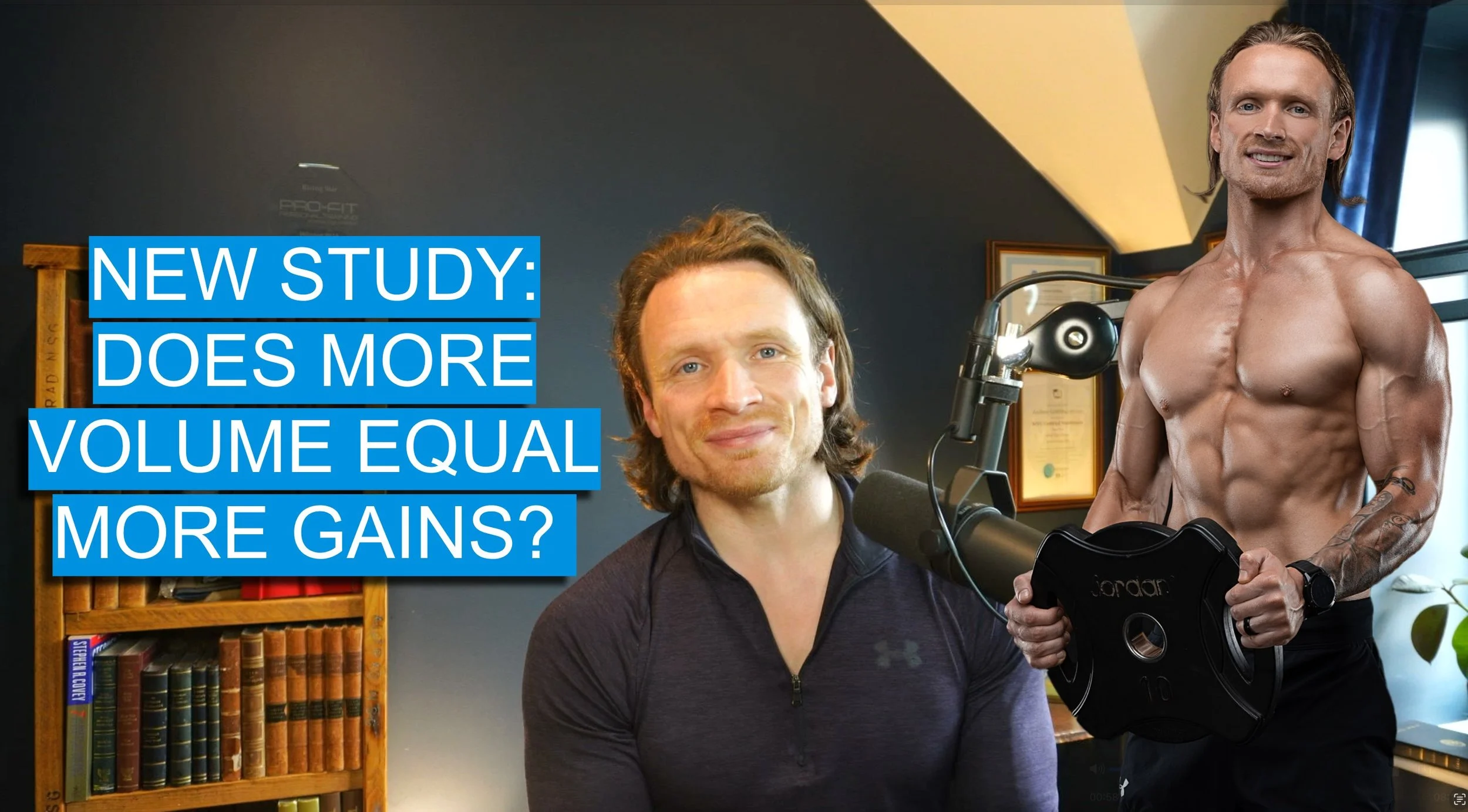Does More Volume Equal More Gains?
Specifically, does the progressive increase in volume equal more gains?
I’ve spoken extensively about training volume in the past, and I tend to be quick to jump into and review the latest research. My programming, both for my clients and for myself, is largely based around getting in an optimal amount of volume while maximising recovery, so I feel I need to be on top of the latest research, as if anything changes, I need to know about it and adapt my programming accordingly.
Today, we review a new study done by Enes et al., which adds further weight to the importance of intelligent programming and the correct use of training volume.
Prefer to watch than read? Then please check out the video below:
Quick Study Breakdown:
Researchers ran a randomised controlled trial with 30 experienced female lifters, dividing them into three groups for 12 weeks:
Constant Group: Trained with 22 sets per week consistently throughout.
Moderate Progression Group: Started at 16 sets per week, adding 2 sets every 2 weeks – ending with 26 sets per week.
Aggressive Progression Group: Began with 18 sets per week and ramped up aggressively, adding 4 sets every 2 weeks — finishing with a hefty 38 sets weekly.
All participants trained legs twice a week, performing each set close to failure, which, for the uninitiated, means pushing each set until only 1–2 reps are left in the tank. This is often where the real muscle-building stimulus occurs.
What Did They Find?
Strength Gains: All groups got stronger, but those gradually increasing sets gained a bit more strength. However, the aggressive approach (lots of extra sets) didn't significantly outperform the moderate one.
Muscle Size: Interestingly, muscle growth differences between the groups were minimal. Doing a ton more sets didn't lead to dramatically bigger legs – just slightly more muscle at best.
So, adding sets helps, to a point. After that, you’ll see diminishing returns.
Practical Takeaways based on this study and the body of evidence:
Weekly Volume: Aim for between 10 and 30 hard sets per muscle group per week. Most lifters see optimal results in this range. Beginners can start lower; more advanced trainees might push toward 20 or even 30 in extreme cases, but over 20 sets per muscle group per week, not just total, we’re talking per muscle group, is unnecessary for most lifters and can risk issues. For example, I know when I’ve pushed my volume a bit high as I start experiencing tendon issues, specifically golfer’s elbow, on both sides. Sometimes our muscles can handle and benefit from a lot of volume, but tendons not so much, joints and old ass in genral can’t – so we need to listen to our bodies.
Sets per Session: Stick to around 4–8 hard sets per muscle group per workout. More isn't necessarily better – in fact, many will see a plateau after about 6 sets per muscle group per session.
Frequency: Ideally, split your weekly volume into 2–5 sessions. You can make great progress with just two sessions, but those sessions would be a smidge long if you’re aiming to squeeze in an optimal amount of volume, so aiming for 3 or more is often better.
Progression: Gradually increasing your volume or intensity is key. Jumping straight to crazy high volumes often means diminishing returns, burnout or injury. I personally progressively increase my client’s volume through phases, and it works well, very well!
The Realistic Optimal:
Let's face it – most of us don’t have time to hit 38 sets on each muscle group weekly. So, you need to be realistic with your time and look to squeeze in the volume that’ll give you a high return on your investment without wasting sets. Remember that in this study, along with many other studies, participants took these sets close to failure, as quality is as important, or perhaps more important, than quantity! We’re not just looking to train a lot, we want to train hard, smart and adapt things as we progress.
Reference:
Enes, A., Correa, C. L., Bernardo, M. F., Salles, G. N., Oneda, G., Leonel, D. F., … Souza-Junior, T. P. (2025). Does increasing the resistance-training volume lead to greater gains? The effects of weekly set progressions on muscular adaptations in females. Journal of Sports Sciences, 43(4), 381–392. https://doi.org/10.1080/02640414.2025.2459003



